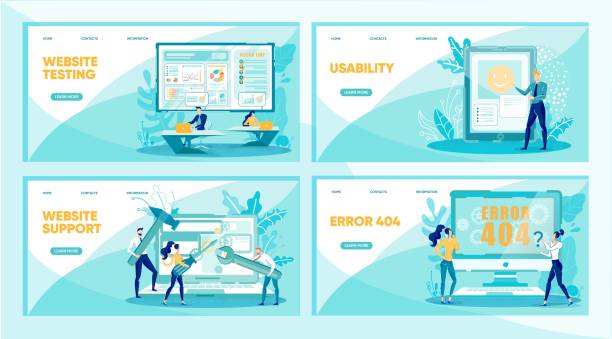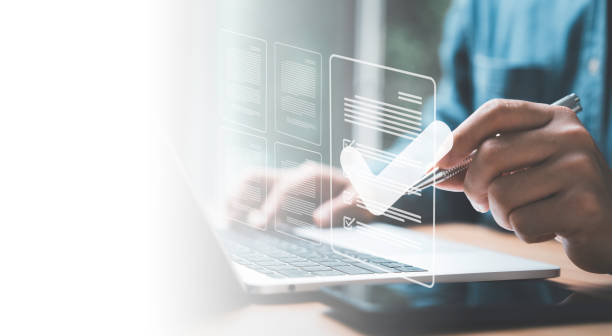مقدمه ای بر سئو داخلی چیست و چرا اهمیت دارد؟
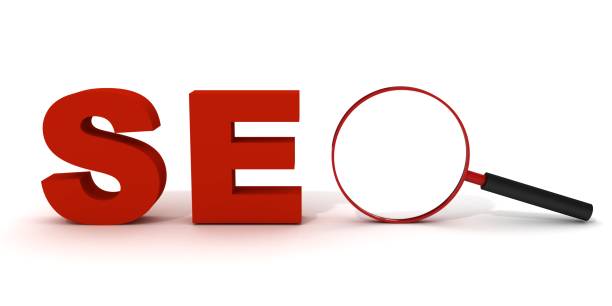
سئو داخلی، که با عنوان #بهینهسازی_درونصفحهای نیز شناخته میشود، به مجموعه فعالیتهایی اطلاق میگردد که درون وبسایت شما و بر روی عناصر مختلف آن برای بهبود رتبه در نتایج موتورهای جستجو انجام میپذیرد.
این بخش حیاتی از بهینهسازی، پایهای محکم برای دیده شدن محتوای شما فراهم میکند.
هدف اصلی سئو داخلی، کمک به موتورهای جستجو برای درک بهتر موضوع و ارزش محتوای شماست.
این فرآیند شامل بهینهسازی تگهای عنوان، توضیحات متا، ساختار URL، محتوای متنی، تصاویر و بسیاری دیگر از عناصر داخلی صفحه است.
بدون یک استراتژی قوی در زمینه سئو داخلی، حتی بهترین محتوا نیز ممکن است در میان انبوه اطلاعات موجود در وب گم شود.
این یک فرآیند اموزشی و مداوم است که نیازمند توجه به جزئیات و درک عمیق الگوریتمهای موتورهای جستجو است.
موفقیت در دیجیتال مارکتینگ به شدت به اجرای صحیح اصول سئوی داخلی وابسته است، زیرا این اقدامات مستقیماً بر روی قابلیت شناسایی و رتبهبندی محتوای شما تأثیر میگذارند.
درک دقیق اهمیت و کارکرد این بخش از سئو، گام نخست برای هر وبمستر و بازاریاب دیجیتالی است که به دنبال افزایش ترافیک ارگانیک و بهبود حضور آنلاین خود میباشند.
بهینهسازی صفحات از این طریق باعث میشود تا محتوای شما نه تنها برای موتورهای جستجو جذاب باشد، بلکه برای کاربران نیز تجربه کاربری بهتری ارائه دهد.
میدانستید ۹۴٪ از اولین برداشت کاربران از یک کسبوکار، به طراحی وبسایت آن مربوط است؟ با طراحی سایت شرکتی حرفهای توسط **رساوب**، این برداشت اولیه را به فرصتی برای رشد تبدیل کنید.
✅ جذب مشتریان بیشتر و افزایش فروش
✅ ایجاد اعتبار و اعتماد در نگاه مخاطب⚡ مشاوره رایگان طراحی سایت دریافت کنید!
تحقیق کلمات کلیدی؛ سنگ بنای سئو داخلی موفق

تحقیق کلمات کلیدی، ستون فقرات هر استراتژی موفق سئو داخلی است.
این فرآیند، نه تنها به شما کمک میکند تا کلماتی را بیابید که مخاطبان هدف شما برای جستجوی اطلاعات، محصولات یا خدمات از آنها استفاده میکنند، بلکه بینشی عمیق در مورد #قصد_جستجو و نیازهای آنها ارائه میدهد.
برای انجام تحقیق کلمات کلیدی موثر، باید از ابزارهای مختلفی استفاده کنید که حجم جستجو، رقابت و کلمات کلیدی مرتبط را نشان میدهند.
کلمات کلیدی انتخابی باید با محتوای شما ارتباط تنگاتنگی داشته باشند و قابلیت جذب ترافیک باکیفیت را دارا باشند.
این گام اولیه و تخصصی، تضمین میکند که تلاشهای شما در سئو داخلی هدفمند و نتیجهبخش باشد.
بدون کلمات کلیدی مناسب، بهینهسازی عناصر داخلی صفحه بیمعنی خواهد بود.
انتخاب کلمات کلیدی مناسب باید به گونهای باشد که هم حجم جستجوی قابل قبولی داشته باشند و هم رقابت در آنها در حدی باشد که وبسایت شما بتواند برای آن رتبهبندی شود.
این مرحله، یک بخش تحلیلی مهم است که پایه و اساس کلیه فعالیتهای بعدی بهینهسازی داخلی را تشکیل میدهد.
درک کلمات کلیدی که کاربران به دنبال آنها هستند، نه تنها به شما در ایجاد محتوای مرتبط کمک میکند، بلکه در بهبود ساختار وبسایت و تجربه کاربری نیز نقش بسزایی دارد.
این یک گام راهنمایی کلیدی برای موفقیت در عرصه دیجیتال است.
بهینهسازی تگهای عنوان و توضیحات متا در سئو داخلی
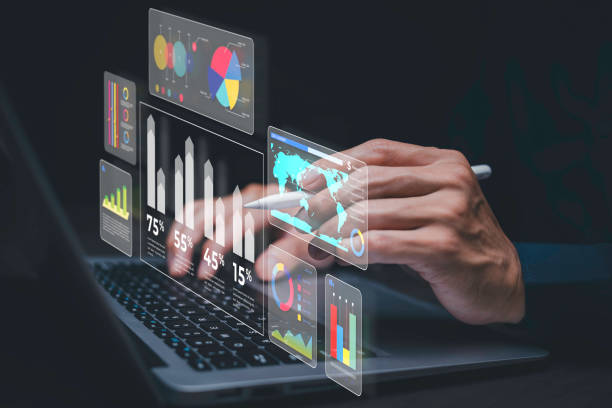
تگهای عنوان (Title Tags) و توضیحات متا (Meta Descriptions) از مهمترین عناصر در بهینهسازی سئو داخلی به شمار میروند.
تگ عنوان، نامی است که برای صفحه شما در نتایج جستجو و تب مرورگر نمایش داده میشود و باید شامل کلمه کلیدی اصلی صفحه باشد و جذابیت کافی برای کلیک کاربران را داشته باشد.
توضیحات متا نیز خلاصهای کوتاه از محتوای صفحه است که زیر عنوان در نتایج جستجو نمایش داده میشود.
اگرچه توضیحات متا مستقیماً بر رتبهبندی تأثیر نمیگذارند، اما نقش بسیار مهمی در نرخ کلیک (CTR) ایفا میکنند.
یک توضیح متا جذاب میتواند کاربران را ترغیب کند تا به جای رقبای شما، بر روی لینک شما کلیک کنند.
رعایت طول استاندارد برای هر دو تگ ضروری است تا به طور کامل در نتایج جستجو نمایش داده شوند.
این جنبهها از سئو داخلی بسیار حیاتی هستند زیرا اولین چیزی هستند که کاربران و موتورهای جستجو از صفحه شما میبینند.
ایجاد تگهای عنوان منحصر به فرد و جذاب برای هر صفحه، به همراه توضیحات متا معنادار و دقیق، میتواند تفاوت بزرگی در جذب ترافیک ارگانیک ایجاد کند.
این یک بخش توضیحی و کاربردی از استراتژی سئوی شماست.
| عنصر | توضیح | اهمیت در سئو |
|---|---|---|
| تگ عنوان (Title Tag) | عنوان قابل نمایش در نتایج جستجو و تب مرورگر | بالا (مستقیماً در رتبهبندی و CTR) |
| توضیحات متا (Meta Description) | خلاصهای کوتاه از محتوا در نتایج جستجو | متوسط (تاثیر غیرمستقیم بر CTR) |
| تگهای هدینگ (H1-H6) | سازماندهی محتوا و ارائه ساختار سلسله مراتبی | متوسط (کمک به خوانایی و درک محتوا) |
| متن جایگزین تصاویر (Alt Text) | توضیح تصاویر برای موتورهای جستجو و کاربران نابینا | متوسط (قابلیت دسترسی و سئو تصاویر) |
بهینهسازی محتوا؛ قلب تپنده سئو داخلی
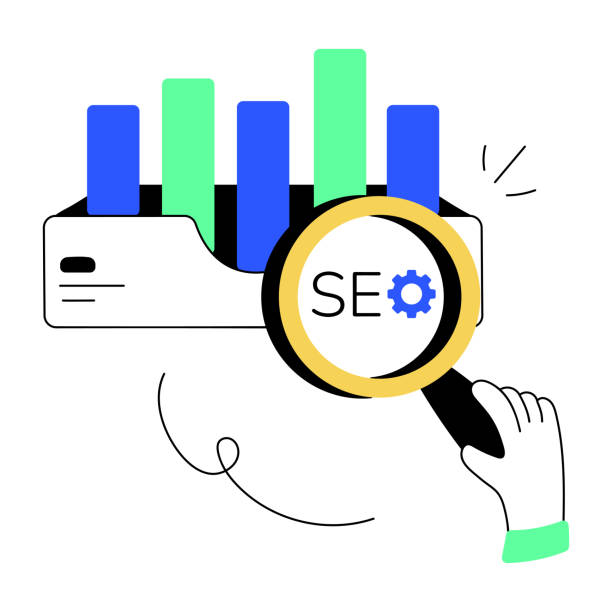
محتوا پادشاه است، و در حوزه سئو داخلی، این جمله بیش از پیش صدق میکند.
بهینهسازی محتوا فراتر از فقط استفاده از کلمات کلیدی است؛ بلکه شامل تولید محتوایی ارزشمند، جامع و مرتبط با نیازهای کاربران است.
محتوای شما باید به سوالات کاربران پاسخ دهد، اطلاعات دقیق ارائه کند و به گونهای سازماندهی شود که خواندن آن آسان باشد.
استفاده طبیعی از کلمات کلیدی در سراسر متن، بدون زیادهروی، برای موتورهای جستجو بسیار مهم است.
همچنین، استفاده از مترادفها و کلمات کلیدی LSI (Latent Semantic Indexing) به موتورهای جستجو کمک میکند تا مفهوم کلی محتوای شما را بهتر درک کنند.
علاوه بر این، طول محتوا نیز میتواند نقش مهمی ایفا کند؛ محتوای طولانیتر و جامعتر معمولاً شانس بیشتری برای رتبهبندی دارد، به شرطی که کیفیت آن حفظ شود.
محتوای سوالبرانگیز میتواند باعث افزایش تعامل کاربران و به اشتراکگذاری محتوا شود، که هر دو سیگنالهای مثبتی برای سئو هستند.
همچنین، ارائه محتوای خبری و به روز میتواند کاربران را به سمت سایت شما هدایت کند.
بهینهسازی محتوا در واقع یک فرآیند تحلیلی و خلاقانه است که نیاز به درک عمیق از مخاطبان و الگوریتمهای موتور جستجو دارد.
این بخش از سئو داخلی، اساس جذب و حفظ مخاطب است و بدون محتوای باکیفیت، سایر تلاشهای بهینهسازی داخلی اثربخشی کمتری خواهند داشت.
بهینهسازی محتوا شامل اطمینان از خوانایی، ساختار منطقی و ارزش افزوده برای خواننده است.
آیا میدانید وبسایت شرکت شما اولین نقطه تماس ۷۵٪ مشتریان بالقوه است؟
وبسایت شما چهره برند شماست. با خدمات طراحی سایت شرکتی **رساوب**، حضوری آنلاین بسازید که اعتماد مشتریان را جلب کند.
✅ ایجاد تصویری حرفهای و ماندگار از برند شما
✅ جذب مشتریان هدف و افزایش اعتبار آنلاین
⚡ دریافت مشاوره رایگان از کارشناسان **رساوب**!
بهینهسازی تصاویر و چندرسانهای برای افزایش اثربخشی سئو داخلی

تصاویر و دیگر عناصر چندرسانهای، نقش کلیدی در بهبود تجربه کاربری و در نتیجه، سئو داخلی ایفا میکنند.
بهینهسازی تصاویر شامل فشردهسازی آنها برای کاهش حجم بدون افت کیفیت چشمگیر، استفاده از فرمتهای مناسب (مانند WebP برای وب)، و مهمتر از همه، تکمیل متن جایگزین (Alt Text) مناسب است.
متن جایگزین نه تنها برای موتورهای جستجو و کمک به درک محتوای تصویر توسط آنها حیاتی است، بلکه برای کاربران با اختلالات بینایی نیز از اهمیت بالایی برخوردار است.
نامگذاری فایلهای تصویری با کلمات کلیدی مرتبط نیز میتواند به سئو کمک کند.
ویدئوها، اینفوگرافیکها و سایر فرمتهای چندرسانهای نیز باید بهینهسازی شوند تا زمان بارگذاری صفحه را افزایش ندهند و به تجربه کاربری کمک کنند.
ارائه محتوای سرگرمکننده و جذاب از طریق این عناصر، میتواند نرخ ماندگاری کاربر در صفحه (Dwell Time) را افزایش دهد که سیگنالی مثبت برای موتورهای جستجو است.
یک جنبه مهم در سئو داخلی، این است که صفحات شما باید سریع بارگذاری شوند و تصاویر بهینهسازی نشده میتوانند سرعت بارگذاری را به شدت کاهش دهند.
بهینهسازی تصاویر به صورت اصولی یک راهنمایی عملی است که به سایت شما کمک میکند تا هم در نتایج جستجوی تصاویر و هم در نتایج جستجوی وب، بهتر ظاهر شود.
این اقدامات کوچک اما مهم، به مرور زمان تأثیرات بزرگی بر رتبهبندی کلی سایت شما خواهند داشت.
اهمیت لینکسازی داخلی در استراتژی سئو داخلی

لینکسازی داخلی، یکی از ابزارهای قدرتمند و اغلب نادیده گرفته شده در استراتژی سئو داخلی است.
لینکهای داخلی، لینکهایی هستند که از یک صفحه در وبسایت شما به صفحه دیگری در همان وبسایت اشاره میکنند.
این لینکها چندین مزیت کلیدی دارند: اولاً، آنها به موتورهای جستجو کمک میکنند تا ساختار وبسایت شما را بهتر درک کنند و صفحات جدید را کشف نمایند.
ثانیاً، لینکهای داخلی قدرت سئو (Link Equity) را در سراسر وبسایت شما توزیع میکنند و به صفحات عمیقتر و مهمتر شما کمک میکنند تا رتبه بالاتری کسب کنند.
ثالثاً، آنها به کاربران کمک میکنند تا به راحتی در وبسایت شما حرکت کنند و به اطلاعات مرتبط دسترسی پیدا کنند، که این امر تجربه کاربری (UX) را بهبود میبخشد.
استفاده از متن لینک (Anchor Text) توصیفی و مرتبط با کلمه کلیدی، از اهمیت بالایی برخوردار است.
باید اطمینان حاصل کنید که ساختار لینکسازی داخلی شما منطقی و کاربردی است.
این جنبه از سئو داخلی یک توضیحی کاربردی برای بهبود ناوبری سایت است.
یک ساختار لینکسازی داخلی قوی، مانند یک شبکه عصبی برای وبسایت شما عمل میکند و به موتورهای جستجو نشان میدهد که کدام صفحات شما مهمتر هستند و چگونه با یکدیگر مرتبطند.
این عمل نه تنها به بهبود رتبهبندی کمک میکند، بلکه به افزایش بازدید صفحات و کاهش نرخ پرش نیز منجر میشود.
ساختار URL و معماری سایت؛ بنیان سئو داخلی پایدار

ساختار URL و معماری کلی سایت از ارکان اصلی یک سئو داخلی موفق و پایدار هستند.
یک ساختار URL تمیز، کوتاه، و شامل کلمات کلیدی، نه تنها برای موتورهای جستجو قابل فهمتر است، بلکه به کاربران نیز کمک میکند تا محتوای صفحه را قبل از کلیک درک کنند.
اجتناب از URLهای طولانی و پر از کاراکترهای نامفهوم برای سئو حیاتی است.
در مورد معماری سایت، باید به گونهای طراحی شود که سلسله مراتبی منطقی داشته باشد، به طوری که کاربران و خزندههای موتور جستجو بتوانند به راحتی از صفحه اصلی به صفحات دستهبندی و سپس به صفحات محصول یا مقاله دسترسی پیدا کنند.
این ساختار منطقی، که اغلب به شکل هرمی تصور میشود، به موتورهای جستجو نشان میدهد که کدام صفحات مهمتر هستند.
استفاده از نقشههای سایت XML و HTML نیز برای کمک به موتورهای جستجو در کشف و ایندکسسازی صفحات ضروری است.
یک معماری سایت خوب به معنای کاهش تعداد کلیکها برای رسیدن به هر صفحه و افزایش سهولت دسترسی به محتوای عمیقتر است، که همه اینها به بهبود سئو داخلی کمک میکنند.
این یک بخش تخصصی است که نیاز به برنامهریزی دقیق دارد.
| عنصر | وضعیت ایدهآل | تأثیر بر سئو |
|---|---|---|
| ساختار URL | کوتاه، خوانا، شامل کلمات کلیدی | مثبت (فهم بهتر برای کاربران و موتورها) |
| عمق صفحات | حداکثر 3-4 کلیک از صفحه اصلی | مثبت (افزایش قابلیت کشف) |
| نقشه سایت XML | بهروز و ارسال شده به کنسول جستجو | مثبت (بهبود ایندکسگذاری) |
| فایل Robots.txt | مدیریت دسترسی خزندهها به بخشهای سایت | مثبت (جلوگیری از ایندکس صفحات نامربوط) |
بهبود سرعت سایت و ریسپانسیو بودن؛ فاکتورهای فنی در سئو داخلی
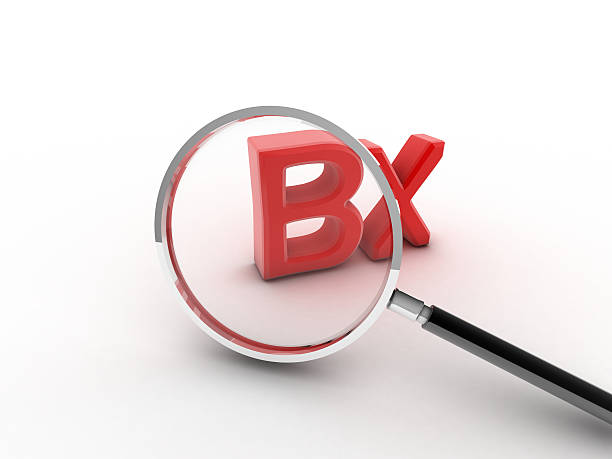
سرعت بارگذاری سایت و ریسپانسیو بودن آن (سازگاری با موبایل)، دو فاکتور فنی بسیار مهم در سئو داخلی هستند که مستقیماً بر تجربه کاربری و رتبهبندی سایت شما تأثیر میگذارند.
موتورهای جستجو به سایتهایی که سریع بارگذاری میشوند و در دستگاههای مختلف به خوبی نمایش داده میشوند، اولویت میدهند.
کاربران امروزی نیز انتظار دارند که صفحات به سرعت بارگذاری شوند و در صورت تأخیر، سایت را ترک میکنند.
برای بهبود سرعت سایت، میتوانید از تکنیکهایی مانند فشردهسازی کدها (HTML, CSS, JavaScript)، بهینهسازی تصاویر (همانطور که قبلاً اشاره شد)، استفاده از کشینگ مرورگر، و انتخاب هاستینگ مناسب استفاده کنید.
ریسپانسیو بودن سایت به این معنی است که طراحی وبسایت شما به طور خودکار با اندازه صفحه نمایش دستگاه کاربر تنظیم میشود، از موبایل و تبلت گرفته تا دسکتاپ.
این عامل به ویژه پس از بهروزرسانیهای اخیر گوگل که بر روی موبایل فرست (Mobile-First Indexing) تمرکز دارند، اهمیت فزایندهای یافته است.
نادیده گرفتن این فاکتورها میتواند تلاشهای شما در سایر جنبههای سئو داخلی را بیاثر کند.
اینها فاکتورهای تخصصی و فنی هستند که نیاز به دانش برنامهنویسی یا کمک یک توسعهدهنده وب دارند.
بهبود سرعت و سازگاری موبایل یک راهنمایی ضروری برای هر وبسایتی است.
آیا طراحی فعلی سایت فروشگاهی شما باعث از دست دادن مشتریان و فروش میشود؟
رساوب با طراحی سایتهای فروشگاهی مدرن و کاربرپسند، راه حل شماست!
✅ افزایش چشمگیر نرخ تبدیل و فروش
✅ ایجاد برندینگ قوی و جلب اعتماد مشتریان
⚡ مشاوره رایگان طراحی سایت فروشگاهی از رساوب دریافت کنید!
نظارت و تحلیل دادهها در بهبود مستمر سئو داخلی
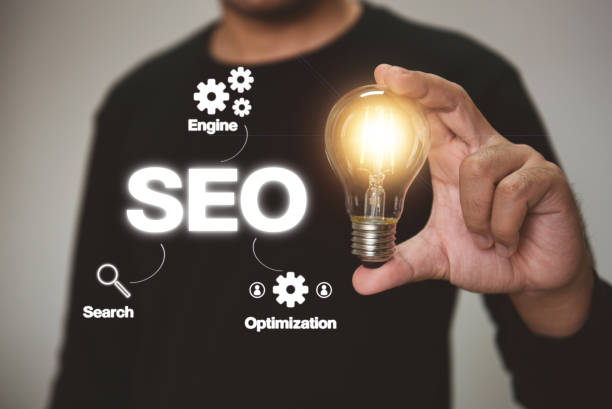
فرآیند سئو داخلی یک فعالیت یکباره نیست، بلکه نیازمند نظارت، تحلیل و بهینهسازی مداوم است.
استفاده از ابزارهایی مانند Google Analytics و Google Search Console برای ردیابی عملکرد سایت شما در نتایج جستجو، بسیار ضروری است.
این ابزارها به شما اطلاعات ارزشمندی در مورد کلمات کلیدی که کاربران شما را پیدا میکنند، صفحات پربازدید، نرخ پرش، زمان ماندگاری در سایت، و خطاهای خزش میدهند.
با تحلیل این دادهها، میتوانید نقاط ضعف و قوت استراتژی سئو داخلی خود را شناسایی کرده و تصمیمات مبتنی بر داده برای بهبود آن اتخاذ کنید.
به عنوان مثال، اگر نرخ پرش یک صفحه خاص بالا باشد، ممکن است نشاندهنده نیاز به بهبود کیفیت محتوا یا تجربه کاربری آن صفحه باشد.
نظارت بر رتبهبندی کلمات کلیدی و ترافیک ارگانیک به شما کمک میکند تا اثربخشی تغییرات اعمال شده را ارزیابی کنید.
این یک فرآیند تحلیلی و اموزشی است که به شما امکان میدهد تا دائماً در حال بهبود باشید و با تغییرات الگوریتمهای موتورهای جستجو همگام شوید.
تجزیه و تحلیل منظم دادهها، جزء لاینفک هر استراتژی موفق سئو است.
روندهای آینده و استراتژیهای پیشرفته در سئو داخلی
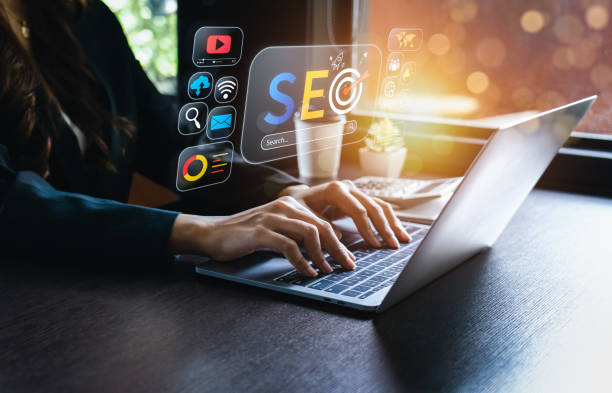
دنیای سئو داخلی به طور مداوم در حال تحول است و برای حفظ رتبه و ترافیک، باید با روندهای آینده و استراتژیهای پیشرفته همگام بود.
هوش مصنوعی و یادگیری ماشین نقش فزایندهای در الگوریتمهای موتورهای جستجو ایفا میکنند، به این معنی که محتوای شما باید نه تنها برای کلمات کلیدی، بلکه برای قصد جستجو و پاسخ به سوالات کاربران به طور طبیعی بهینهسازی شود.
سئوی صوتی (Voice SEO) و بهینهسازی برای جستجوهای محلی نیز از اهمیت بالایی برخوردار شدهاند.
محتوای ویدئویی همچنان محبوبیت خود را افزایش میدهد و بهینهسازی آن برای جستجو (مانند ایجاد رونوشت، تگهای مناسب، و توضیحات دقیق) برای سئو داخلی ضروری است.
علاوه بر این، اهمیت Core Web Vitals و تجربه صفحه (Page Experience) به عنوان فاکتورهای رتبهبندی افزایش یافته است.
این معیارها شامل سرعت بارگذاری، تعامل و ثبات بصری صفحه هستند.
محتوای سرگرمکننده و سوالبرانگیز که کاربران را درگیر کند، به طور فزایندهای ارزش پیدا میکند.
این یک زمینه تخصصی و در حال تغییر است که نیاز به آگاهی مداوم از آخرین تحولات دارد.
ادامه آموزش و بهروزرسانی دانش در زمینه سئو داخلی، کلید موفقیت پایدار در این حوزه پویا است.
سوالات متداول
| شماره | سوال | پاسخ |
|---|---|---|
| 1 | سئو داخلی (On-Page SEO) چیست؟ | سئو داخلی به مجموعه اقداماتی گفته میشود که درون وبسایت و برای بهینهسازی صفحات آن انجام میشود تا رتبه بهتری در نتایج جستجو کسب کند. |
| 2 | مهمترین عامل در سئو داخلی چیست؟ | محتوای با کیفیت، مرتبط و جامع که نیاز کاربر را برطرف کند، مهمترین عامل در سئو داخلی است. |
| 3 | تگ عنوان (Title Tag) چه نقشی در سئو داخلی دارد؟ | تگ عنوان یکی از مهمترین فاکتورهاست که به موتورهای جستجو و کاربران میگوید محتوای صفحه در مورد چیست. باید شامل کلمه کلیدی اصلی و جذاب باشد. |
| 4 | تگ توضیحات متا (Meta Description) چقدر اهمیت دارد؟ | اگرچه مستقیماً بر رتبهبندی تأثیر نمیگذارد، اما بر نرخ کلیک (CTR) در نتایج جستجو بسیار مؤثر است و کاربران را تشویق به بازدید از صفحه میکند. |
| 5 | بهینهسازی تصاویر در سئو داخلی چگونه انجام میشود؟ | با استفاده از تگ alt مناسب، فشردهسازی حجم تصویر برای افزایش سرعت بارگذاری و نامگذاری معنیدار فایل تصویر. |
| 6 | اهمیت استفاده از هدینگها (H1, H2, H3) در سئو داخلی چیست؟ | هدینگها به ساختاردهی محتوا کمک کرده، خوانایی را افزایش میدهند و به موتورهای جستجو در درک سلسلهمراتب و موضوعات فرعی محتوا کمک میکنند. |
| 7 | لینکسازی داخلی (Internal Linking) به چه معناست و چه فوایدی دارد؟ | لینکسازی داخلی به معنای ایجاد لینک بین صفحات مختلف یک وبسایت است. این کار به توزیع اعتبار، بهبود ناوبری کاربر و کمک به خزش موتورهای جستجو کمک میکند. |
| 8 | کلمه کلیدی اصلی (Focus Keyword) در کجای صفحه باید قرار گیرد؟ | کلمه کلیدی اصلی باید در تگ عنوان، توضیحات متا، H1، پاراگراف اول، و به صورت طبیعی و در طول متن و در صورت امکان در آدرس URL قرار گیرد. |
| 9 | محتوای کپی یا تکراری چه تأثیری بر سئو داخلی دارد؟ | محتوای تکراری میتواند به رتبهبندی سایت آسیب برساند و باعث سردرگمی موتورهای جستجو شود که کدام نسخه اصلی است و ممکن است آن را اسپم تشخیص دهند. |
| 10 | سرعت بارگذاری صفحه چقدر در سئو داخلی مهم است؟ | سرعت بارگذاری صفحه یک عامل رتبهبندی مهم است و مستقیماً بر تجربه کاربری تأثیر میگذارد. صفحات کند باعث افزایش نرخ پرش کاربران میشوند. |
و دیگر خدمات آژانس تبلیغاتی رسا وب در زمینه تبلیغات
مارکت پلیس هوشمند: راهکاری حرفهای برای افزایش بازدید سایت با تمرکز بر طراحی رابط کاربری جذاب.
دیجیتال برندینگ هوشمند: خدمتی اختصاصی برای رشد تعامل کاربران بر پایه هدفگذاری دقیق مخاطب.
اتوماسیون فروش هوشمند: راهکاری حرفهای برای برندسازی دیجیتال با تمرکز بر تحلیل هوشمند دادهها.
دیجیتال برندینگ هوشمند: ترکیبی از خلاقیت و تکنولوژی برای افزایش بازدید سایت توسط استفاده از دادههای واقعی.
دیجیتال برندینگ هوشمند: خدمتی اختصاصی برای رشد افزایش فروش بر پایه اتوماسیون بازاریابی.
و بیش از صد ها خدمات دیگر در حوزه تبلیغات اینترنتی ،مشاوره تبلیغاتی و راهکارهای سازمانی
تبلیغات اینترنتی | استراتژی تبلیعاتی | ریپورتاژ آگهی
منابع
- سئو داخلی چیست؟ راهنمای جامع Internal SEO
- راهنمای جامع سئو داخلی – SEOEDU
- سئو داخلی چیست و چطور در سئو داخلی موفق باشیم؟ | Modir.tv
- چک لیست سئو داخلی (on page seo) و راهنمای کامل – سئو اسکول
? آیا آمادهاید تا کسبوکار خود را در فضای دیجیتال متحول کنید؟ آژانس دیجیتال مارکتینگ رساوب آفرین، با ارائه راهکارهای تخصصی و یکپارچه، از جمله خدمات پیشرفته طراحی سایت وردپرس، به شما کمک میکند تا حضوری قدرتمند و چشمگیر در دنیای آنلاین داشته باشید.
📍 تهران ، خیابان میرداماد ،جنب بانک مرکزی ، کوچه کازرون جنوبی ، کوچه رامین پلاک 6

